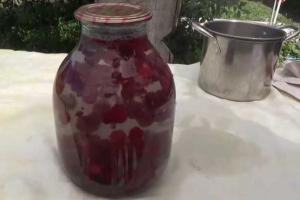Snapdragon(Latin name Antirrhinum) is a cute summer plant, which the Russians call “dogs,” Ukrainians call them “mouths,” the British call them “biting dragons,” and the French call them “cleft mouths.” All these names indicate the external resemblance of the plant's flowers to the open mouth of animals. The article will discuss how to plant antirrinum and how to care for it in open ground, that is, in a flower bed. Colorful photos of these interesting flowers and information about when it is best to plant the plant will complete the picture.
Description, varieties and varieties
This plant, covered in myths and legends, has been in cultivation for about 500 years. Thanks to breeders who began work on Antirrium major in the 19th century, there are now about 1000 varieties of the flower.
The plant can be described as follows:
- Herbaceous crop (subshrub) with vertical stems from 15 cm to 1 m in height.
- The leaves are elongated-oval. Below they are located opposite each other, and in the upper part of the plant - alternately.
- U different varieties green tone leaves may vary slightly. The presence of red veins is often noted.
- The flowers are irregularly shaped, two-lipped, simple and double. Endowed with a subtle, pleasant aroma. The color can be one-color or two- or three-color. All qualities depend on the variety.
- The fruit of the plant is a two-lobed capsule in which from 5,000 to 8,000 thousand small seeds can ripen.
- The first snapdragon buds open in June. Flowering stops in late autumn.

Snapdragon flower
There are several classifications of antirium. The most convenient of them is based on the height of the plants.
- Gigantic - stem length 90-130 cm. For example, the Arthur variety is 90 cm high with cherry flowers. XL hybrids of pink and red colors are also popular.
- High - 90 cm. A series of varieties Rocket with white-yellow graceful flowers and Madame Butterfly with double, different colors flowers, used for cutting.
- Average height - 40-60 cm. They stand out from other varieties due to their strong branching. Wildrose - pure pink flowers, Defiance - red-orange with lilac shade, Ruby - hot pink.
- Low varieties - 25-40 cm. Ampelous hybrid Lampion, Ruby Star variety with flowers of the corresponding color, Tip-top - coloring in pastel colors.
- Dwarfs - height 15-20 cm. Top-Tumb - a bush in the shape of a sphere with bright yellow flowers, Floral is a group of hybrids with 13 color options.
The difference in height and wide range of colors of plants makes it easy to decorate a flowerbed or container with them.
Growing snapdragons
Before purchasing seeds, you need to decide on the variety. For example, tall plants are suitable for growing outdoors, while dwarf and ampelous varieties are ideal for balcony boxes.
You can collect the seeds yourself, but it should be borne in mind that hybrids do not retain their parental qualities. The collection begins at the time when the boxes in the lower part of the inflorescence are fully ripened. The unripe green upper part is removed. Place a simple paper bag over the remains of the flower shoot, hang the plant in a dry place and wait until the seeds begin to fall from the opened boxes.

Snapdragons can be grown on the balcony
This popular flower is grown in two ways:
- sowing in the ground;
- through seedlings.
The first option is simpler, but it is much more difficult to plan a flower bed. Everything here depends entirely on weather conditions. In the event of prolonged cold weather, some seeds may simply not germinate.
Advice. If it is not possible to grow seedlings, then it is better to cover the flowerbed with snapdragon crops with agrospan or polyethylene.
Seeds for seedlings are sown as follows:
- A low container, such as a box, is filled with fertile soil. For snapdragons, garden soil, sand and humus in a ratio of 2:1:1 are suitable.
- Small brown seeds are scattered evenly over the surface of the soil. Using a sieve, cover them with a thin layer of soil.
- The crops are moistened (preferably from a spray bottle).
- The top of the container is covered with film or covered with glass.
- The box is placed in a warm place.

Caring for snapdragon seedlings will not cause difficulties
The shelter is immediately removed as soon as seedlings appear and small plants are placed in a well-lit place. Snapdragons are planted in separate containers after about a month. The signal for picking is the formation of two leaves. After the development of 4-5 leaves, the top of the plant needs to be pinched. This will enhance tillering.
How to plant seedlings in a flowerbed and care for the plant in the future
Shortly before planting, the plants are hardened off by exposing the pots with seedlings to fresh air every day.
The flowerbed where the snapdragon is planned to be planted should be located in the sun, without shade. There are no special requirements for the soil, but loam with a neutral reaction is preferable.
Attention! Seedlings can be planted in a flowerbed only after the onset of stable heat. Even slight frosts can destroy the plant.
Upon landing different varieties The following intervals should be adhered to:
- for tall varieties - up to half a meter apart;
- for medium-sized people 30 cm will be enough;
- It is better to plant low varieties every 20 cm;
- dwarfs require 15 cm spacing.
Directly planting snapdragons occurs in the same way as most flower crops. After rooting, the seedlings grow very actively and turn into a beautiful bush.

For creating beautiful composition in the flowerbed, choose plants of different heights
Flower care consists of traditional gardening work:
- glaze;
- loosening the soil around plants;
- weeding as necessary;
- fertilizing
The plant needs to be watered only during dry and hot periods of summer. The rest of the time, natural precipitation is enough for him. The next day after watering, you need to loosen the soil under the plants (this will promote better aeration of the roots) and remove any weeds that have appeared.
As a top dressing, immediately after planting, nitrophoska is suitable, and during budding good option there will be an aqueous solution of urea, superphosphate and potassium sulfate (1 tablespoon each per 10 liters of water).
Advice. In order for the plant to bloom for a long time, faded flower stalks should be regularly removed.
This article is about snapdragon, or antirrhinum, in general. A bright, elegant, juicy flower that has somewhat gone out of fashion, but there is no doubt that its popularity will still experience its peak. This is a very bright, flowerbed flower, pleasing with its variety of colors and funny “faces” of flowers.
Description
Snapdragon is a perennial, cultivated as an annual in our country. The plant has a straight, branched, medium-leafed bush. The height varies greatly, from compact varieties of 15 cm to giants of 1 m. The flowers are collected in a spike-shaped inflorescence. The range of colors is varied, only blue, light blue, and lilac tones are not represented. Flowers are multi-colored, two-colored, double. They have a pleasant aroma. The plant is characterized by long, rich flowering, blooming from June until frost. In mild winters, it can successfully overwinter and bloom the next year. The plant loves light, but can grow in the shade. It can be planted under trees. Cold-resistant, tolerates moderate spring temperature changes.

Historical information
Of course, snapdragon cannot be defeated, the wild ancestor of which could not even be found, but this flower is also one of the most ancient cultivated plants - gardeners have been growing it for more than 500 years. The ancestor of all modern varieties (and there are about 1000 of them today) was one species - Antirrhinum majus.
There is an ancient Greek legend about the origin of the flower: the flower was created by the goddess Flora, who admired the feat of Hercules, who defeated the Nemean lion. The goddess tried to make the flower resemble a lion's mouth.

Types and varieties
Snapdragon or antirrhinum (lat. Antirrhinum) is a whole genus of plants, numbering about 50 species of perennials herbaceous plants. The genus is part of the Plantain family (such well-known crops as bacopa, toadflax are also included in this family)
The homeland of most species is North America.
The name Antirrhinum comes from Greek and means “nose-like.” In many countries, the plant received a bright, figurative name that best characterizes the structure of the flower - “dogs” (Russia), or “biting dragon”, snap dragon (English-speaking countries), “cleft palate” (France), “mouths” (Ukraine ).
All varieties are classified according to different characteristics, the simplest classification is by plant height:
- Dwarf- 15-20 cm. These are border and charming container plants. They bush abundantly, side shoots the same height as the main one. They also look great in rock gardens, ridges and carpet beds.
- Short- 25-40 cm. They also look great in flower beds, ridges, borders, carpet compositions, containers, and flowerpots. The side shoots and the main one are on the same level.
- Average - 40-60 cm. Universal, suitable for group plantings, flower beds, suitable for cutting. They branch strongly, the central shoot is the highest.
- High— 60-90 cm. Accent plants in a mixborder or flowerbed. The side shoots are significantly lower than the central one, which is why flowering plant resembles a candle. When cut, it stays fresh for 2 weeks.
- Giants— 90-130 cm. They are used for the same purposes as tall ones. The central shoot is much higher than the shoots of the second level, more low levels No.

Planting and care
Feeding is not necessary, but the plant will respond well to watering with a weak solution of complex mineral fertilizers 1 time in mid-summer.
Basic Rules:
- The place should be sunny, but partial shade is possible.
- Be sure to have good drainage in the area!
- It is advisable to choose a place protected from the winds.
- Soil acidity is average; the soil should be fertile, light, and nutritious.
- Care is extremely simple, the plant is unpretentious: watering, removing weeds, loosening.
- Watering is required abundantly only in dry, hot summers.
- Withered flowers, if you do not plan to collect seeds, pick off and cut off the faded shoots, this stimulates the appearance of new ones.
- Immediately after planting in open ground, they are fed with organic matter, the second time with mineral feeding - during the budding period (a solution of urea, superphosphate and potassium sulfate is prepared).
- If the plant becomes sick with rust, black leg, or gray rot, it is immediately removed and burned, and the planting site is sprayed with fungicide.
- It is best to use preventive measures against scale insects, caterpillars and other pests: no excess or stagnation of water, do not water so that water gets on the leaves, remove affected plants.
- After flowering, in the fall, the snapdragon is cut off, leaving a stump of about 5 cm, mulched - then, perhaps, the plant will overwinter.
- If there is no desire to save for the next season, or in your region the winters are too harsh, which the plants are guaranteed not to survive, the seed shoots are cut off in time to avoid self-sowing (this is also important when collecting seeds - to prevent them from falling), the area is dug up, all plant remains are burn.


Growing seedlings from seeds
Snapdragon seeds remain viable for several years. As a rule, in middle lane It is grown in seedlings, the plant is cold-resistant, tolerates nighttime drops in temperature well, but it cannot withstand return frosts.
How to grow from seeds? Follow these simple instructions:
- Sowing in early March.
- Pour drainage into the container, then compact the soil mixed with sand and moisten it with a spray bottle.
- Mix antirrinum seeds with sand and spread over the surface, pressing lightly. You can sprinkle the seeds with a thin layer of soil.
- Cover with glass. Place in a place with a temperature of about 23 ºC.
- Ventilate daily. Remove excess moisture from the glass.
- After 2 weeks, sprouts will appear.
- Move to a bright place, but away from direct sunlight.
- The glass is removed when all the seeds have sprouted.
Seedling care
At first, it does not grow very quickly; the crops should be moistened moderately, avoiding excess moisture (otherwise there is a risk that the snapdragon seedlings will die from the “black leg”). Fallen sprouts have most likely already been damaged; it is recommended to remove them and sprinkle the area where they grow with crushed coal.
Seedlings are picked when the second true leaf appears, planted in planting boxes, or in separate pots of several pieces. Place in a bright place, gradually accustom it to fresh air, opening, for example, a window (just be careful that tender young plants are not standing in a direct draft). When the fifth leaf appears, the central shoot is pinched; if the side shoots grow too quickly, they are pinched too.
Ready seedlings are planted in boxes on the balcony or in open ground in mid-late May, maintaining a distance of 15 cm (dwarf varieties), 20-30 cm (medium-sized varieties), 40-50 cm (tall and giant varieties).
Sowing in open ground is also possible; plants sprout in 2-3 weeks.
Application in the garden
This is an excellent border crop if you need to create an edging for a mixed border, a border, a line along a path - you won’t find a brighter plant. Can be good in group plantings and goes well with lawns. It is planted in balcony boxes, containers, and flowerpots. They decorate loggias and...



There is a legend that this plant received its name from an ancient Greek myth, which says that one of the goddesses gave an unusual flower to Hercules after defeating a ferocious lion. The shape of the inflorescence resembled the mouth of a lion, and the flower was called snapdragon. In warm countries and North America meet perennial species. In modern floriculture there are about 1000 types of seeds. The height of the stems can grow from 20 centimeters to 80 - 90 centimeters.
Flowers with a pleasant aroma, are large, medium, double, different color range: white, yellow, red. When the flowering period ends, a box with a large number of seeds forms in place of the flowers. Experienced summer residents The seeds are collected and stored until spring for growing seedlings or planting in the ground. In warm climates where there is no harsh winters, this plant has every chance of successfully overwintering and blooming again next summer. A flower can grow alone in a garden bed or flower bed, or together with others. Snapdragons will look wonderful against a backdrop of green sprouts. Today among the seeds there are ampelous varieties. The flowering period of this variety of pharynx under certain conditions of courtship and watering is also from June to September. Landing ampelous seeds or seedlings are produced in soil of special designs or hanging pots.

Grow snapdragons on summer cottage, in a city park - not as difficult a task as it seems. In the south, snapdragon seeds can be planted directly in open ground as soon as the soil warms up enough. Planting and care begin in March - April. We dig up the bed with mineral or organic fertilizers on the bayonet of a shovel, we remove all the weeds and clods of earth. We level the ground with a rake and make grooves 1–2 centimeters deep and water. Let's start sowing. Take a container with snapdragon seeds and add dry fine river sand in a ratio of 1:10. This is done to make it easier to sow the small seeds of the plant. Gently sprinkle with soil. Sowing is completed. Next - watering from a watering can. To reduce the time for germination of seeds, you can cover them with film or covering material. After the first shoots, remove the film. Then care will consist of thinning the plants. After 3-4 leaves appear, remove weak, thin stems, leaving the healthiest ones at a distance of at least 20 centimeters. This depends on the growing conditions of each variety. At the same time, the crown of each plant left must be pinched. Planting in the ground has been completed and maintenance now consists of watering and timely loosening.

In the middle zone and northern regions, growing pharynx in open ground occurs only through seedlings. Planting and care begin in March. We fill wide bowls with earth. There must be drainage or drainage holes at the bottom excess moisture. Spray the soil from a spray bottle to keep it moist. Mix the seeds with sand and sow evenly. Carefully sprinkle with soil and water again from the sprayer. Cover the container with glass. Planting of seeds is completed.
Now care consists of daily ventilation and watering of the soil. It should be noted that you cannot overwater the soil; it must remain moist and not soggy, otherwise there will be no germination from snapdragon seeds. The glass can be removed after the leaves appear. In time, this will be 12-16 days after landing. For good growing We transfer the seedlings to a sunny, warm place. Snapdragon grows very slowly. Caring for it should be daily. You should pay attention to the fact that there is enough lighting, water, and the air should not be dry. After 3-4 leaves appear, the flowers are picked: planted one at a time in individual cups. There should be a drainage or hole at the bottom of the glass to drain excess water. Fill the cup with soil, make a hole, and water it. We also water the bowl with the seedlings thoroughly so that a lump of earth remains on the root of each plant when transplanting.

Carefully lower one sprout with a lump of earth into the hole, press it, sprinkle it with earth, press it again.
If there glass veranda or a balcony, and the temperature there at night does not drop below +13-15 degrees, after a couple of days the seedlings can be taken out. This is done to harden the seedlings.After 4-5 leaves appear, the stem must be pinched so that the plant produces lateral shoots. In the middle zone, at the beginning of June, snapdragons are planted in open ground. It is recommended to plant snapdragons in a sunny or slightly shaded bed. If the plants are strong and hardened, they will not be afraid of slight drops in temperature at night.

Before planting, it is necessary to add humus, sand, peat to the soil, dig it thoroughly, remove weeds and large lumps of earth. We make holes and water them. Seedlings in cups also need to be watered to make it easier to remove the plant along with the soil. Plant snapdragons like this: low varieties every 20 centimeters, medium varieties every 35, high varieties no closer than 50. proper care, if the snapdragon takes root, increased growth begins. The flowering period is from June to September. Further care care for the flower consists of timely weeding and proper watering.
Snapdragon requires watering in the morning. You should ensure that the soil does not turn into crust after watering; be sure to loosen it and remove weeds. Tall varieties must be tied to a support. Remove wilted flowers, then new flowers will appear. If you have a goal to grow from a bush perennial, after flowering, in the fall, it is necessary to trim the plant, leaving no more than 10 centimeters of the stem.
Cover with mulch - sawdust, dry leaves, spruce branches - this will help survive the winter.Before cutting the plant, you should collect snapdragon seeds. They are collected unripe, placed in a paper bag and stored in a dry, warm place until the boxes ripen and the seeds spill out. Then the seeds are stored in a paper bag in a dry place at a temperature no higher than +5 degrees.
Planting and care will not be difficult if you follow certain rules.

Antirrinum or snapdragon is a perennial, annual or semi-shrub herbaceous ornamental flowering plant, native to the warm countries of the Mediterranean. In nature, the flower also grows in North America and Europe. The snapdragon plant is also very popular among gardeners. And this is understandable, because the amazing colors of the buds, bizarre flower shapes and long-lasting flowering can decorate any part of the garden throughout the season.
Snapdragon – description, photo 
The antirrhinum flower is distinguished by green, straight, finely grooved, large stems, the height of which can be from 15 to 100 cm. The plant has opposite lower leaves and oval or lanceolate elongated upper leaves. By the beginning of summer, racemose inflorescences with numerous large, two-lipped flowers form on the stem. They have irregular shape and can be simple or terry. The color of the flowers can be pink, red, dark brown, orange, yellow, white. There are varieties with flowers painted in two or three colors at once. Snapdragon blooms from the beginning of summer until the onset of autumn frosts. 
In nature, the snapdragon flower is a perennial, however, in regions with cold winters the plant is grown as an annual. At favorable conditions And good care Antirrinum can be grown in the garden as a perennial plant. 
Growing snapdragons from seeds
Sowing seeds in open ground

In regions with warm climates, antirrinum can be grown as a perennial by planting the seeds directly in the flower bed. Crops are carried out in early spring or mid to late April. It all depends on the weather in your area. Shoots will appear in about three weeks and can survive even a slight cold snap.
Seeds are planted on a bed prepared in advance in a nesting manner, sprinkled with a thin layer of soil, watered from a watering can with a shower attachment and covered with film. The crops are ventilated daily, and the soil is moistened as necessary. As soon as the seedlings appear, the film is removed on warm days. It is better to leave the shelter at night.
Slightly grown seedlings will need to be thinned out, removing the weakest plants. In order not to damage the roots of closely growing bushes, it is better not to pull out unnecessary seedlings, but to pinch them off. When caring for them, watering should be regular, but not frequent. Seedlings are sensitive to soil moisture, and if it is over-moistened, young plants may develop blackleg disease. It is recommended to water in the early morning.
Growing antirrinum (snapdragon) seedlings

With the seedling method of growing annuals, seeds should be sown in early March. For this purpose, seedling containers with drainage holes are prepared. They can be filled with soil mixture from the store or you can prepare it yourself from compost soil and sand.
Sowing procedure:

Features of caring for snapdragon seedlings
The air temperature for seedling growth should be +20…+23 degrees. They are moistened in a timely manner, and after two true leaves appear, they are planted disposable cups or other containers. You can use spacious pots by planting three bushes in them at once.
When transplanting seedlings, you can use a special spatula or a simple fork, with which the plants are taken out along with a lump of earth and carefully placed in a pot filled with earth. Antirrinums do not tolerate transplantation well, so everything must be done so as not to damage the roots. The planted plants are carefully watered.
Grow pruned seedlings in a well-lit place, otherwise, with a lack of light, the stems will begin to stretch. When watering the bushes, you should keep in mind that snapdragons do not like waterlogged soil. Constantly wet soil can lead to rotting of the roots and the appearance of a disease such as “blackleg”. However, you cannot overdry the soil.
To stimulate the growth of side shoots of seedlings 10 cm high, pinch the top. At this time they should have 4 or 5 true leaves. After this procedure, the snapdragon will turn into a beautiful, lush bush. If the regrown side shoots begin to grow too actively, they can also be pinched.
About two to three weeks before planting antirrinum in open ground, the seedlings begin to harden. On warm days it is placed in the garden or on open balcony. On the first day, plants are hardened for one hour. Every day the time spent by seedlings in the fresh air increases. In the last days before planting, the seedlings should be outside for 24 hours.
Planting snapdragons in open ground 
For the antirrinum, a sunny or slightly shaded area is selected, which should be protected from strong winds.
When to plant snapdragons?
Hardened and grown seedlings can be planted in a flower bed in the garden at the end of May or beginning of June. The weather should be warm, however, the plants can survive small, short-term night frosts.
How to plant snapdragons?
The soil for antirrinum should be well-drained, nutritious and light. It is best if it consists of compost, sand and peat (1:1:1).
For each bush, a separate planting hole is made, the distance between which depends on the height of the plant:
- Dwarf antirrinums are planted in a flowerbed at a distance of 15 cm from each other.
- There should be a gap of 20 cm between low-growing specimens.
- Tall snapdragon bushes are planted at a distance of 40 or 50 cm from each other. Immediately during planting, it is recommended to install supports near the tall specimens, to which the grown plants will need to be tied.
After planting, the seedlings must be watered.
Snapdragon - care 
Snapdragon belongs to unpretentious plants, which do not require much attention during the season. The bushes will bloom magnificently and for a long time if you follow simple recommendations for caring for them:
- In dry and hot weather, plants require watering. This should be done early in the morning. It is not recommended to water snapdragons at night. If it rains, there is no need to water the flowers.
- After rain or watering, it is recommended to remove weeds and loosen the soil around the plantings approximately once a week. This procedure will prevent the formation of a crust on the soil, and air will flow to the roots of the plants.
- After about two weeks, when the seedlings take root and begin to grow, they are fed with universal fertilizers for flowering plants.
- During budding, it is recommended to feed the bushes with a solution prepared from a mixture of potassium sulfate, urea and superphosphate. To prepare it, take a tablespoon of each fertilizer. The mixture is diluted in 10 liters of water.
- Wilted flowers should be removed regularly so that new buds form more quickly.
- After flowering, fruits begin to form and ripen on the peduncle. If you do not need the seeds, then cut off the faded peduncle under the lowest flower. In this case, after some time, new arrows will appear on the bush and begin to grow, which will soon bloom.
- In regions with not very cold winters, where snapdragon is grown as a perennial plant, in the fall, with the onset of cold days, you need to cut off the plant's stem. The remainder of the stem should have a height of 5 to 8 cm. After this, the bushes are covered with dry leaves or peat mixed with sawdust.
Pests and diseases of snapdragon

By following all the rules for caring for antirrinum, the plants will not be afraid of any diseases or pests. TO preventive measures relate:
- Moderate moisture of the area.
- Planting bushes at a distance from each other from 15 to 50 cm (it all depends on the variety of snapdragon).
- Specimens affected by pests and diseases must be removed immediately.
- You should water the bushes only at the roots so that water does not get on the leaves.
If pests have settled on the plants, the bushes are treated with insecticidal preparations. Among the pests that are dangerous for snapdragons are egg-laying caterpillars and butterflies, fly larvae, and scale insects.
Among the diseases, a flower can be affected by gray or root rot, blackleg and septoria. All these diseases cannot be cured and they quickly spread to other plants. Therefore, diseased bushes are pulled out and burned. The soil on which they grew must be shed with fungicidal antifungal drugs.
Blooming profusely beautiful plant Antirrinum (snapdragon) will decorate the garden with its bright or delicate flowers until late autumn. His low-growing varieties You can plant it in a box or flowerpot and decorate your balcony or loggia. 
And snapdragons, because growing from seeds is considered a waste of time, effort and money. One day they sowed seeds from two or three bags, but without seeing any germination, they decided not to risk it anymore. Perhaps you have also encountered such a problem?
Why don't small seeds germinate?
The most common reason is they have been sitting on the store display too long and have lost their viability. Therefore, before purchasing, read everything that is written on the bags - self-respecting manufacturers are sure to indicate the expiration date and indicate other information about the seeds.
Despite the small size, Snapdragon seeds (antirrhinum) remain viable for several years.
Antirrinum – an unpretentious plant, resistant to diseases and pests. It is distinguished by a variety of flower colors and long flowering. Mature plant tolerates frosts up to -5 °C and continues to decorate the garden after most of the other flowers have died. Under favorable conditions, it propagates by cuttings and self-sowing.

How to sow snapdragon?
In areas with warm climates, it can be sown directly into the ground. In this case, the seedlings appear later, but they develop better, get sick less and tolerate minor frosts without loss. But if you live where the springs are cold and long, then it is better to grow snapdragons through seedlings.

Prepare small boxes or bowls in advance, about 10 cm high. Place coarse sand on the bottom, add a mixture of compost soil and the same sand on top. Carefully level the surface and moisten the soil.
To ensure that the seeds are distributed evenly, mix them with sand. After sowing, lightly sprinkle with substrate and carefully water with a spray bottle. Cover the bowl or box with glass, plastic bag or a plastic cap.
Ventilate the crops daily by raising the cover.
Monitor the condition of the soil - it should not be dry or too wet, both of which can lead to the death of seedlings.
At optimal temperature 18–23 °C, shoots appear in 10–14 days. As soon as this happens, move the box to a bright room, but place it so that in the first days straight Sun rays did not get on the plants. Some gardeners recommend removing the glass as soon as the shoots appear. Others believe that you can leave it for a few more days, but it is necessary to ventilate the crops more often.
At first, seedlings develop slowly. They need to be watered very carefully, best done in the morning. Excess moisture bad light and dense planting can cause seedling death. If you notice fallen seedlings, carefully remove them with tweezers and sprinkle the soil in the box crushed charcoal(you can replace it with activated) or calcined river sand.
Pay attention to this material -
How to sow snapdragon seeds, video:
Caring for seedlings.
After the second true leaf appears, you can begin picking. It is best to use small pots, with one plant in each. Placed in medium-sized pots 2–3 seedlings.
After picking, protect the plants from bright sunlight for several days.
Snapdragon easily tolerates careful transplantation. As soon as the seedlings get stronger and begin to grow, begin to accustom them to bright light and fresh air, leaving them for several hours on an open window, veranda or balcony.
You might be interested in this article -








